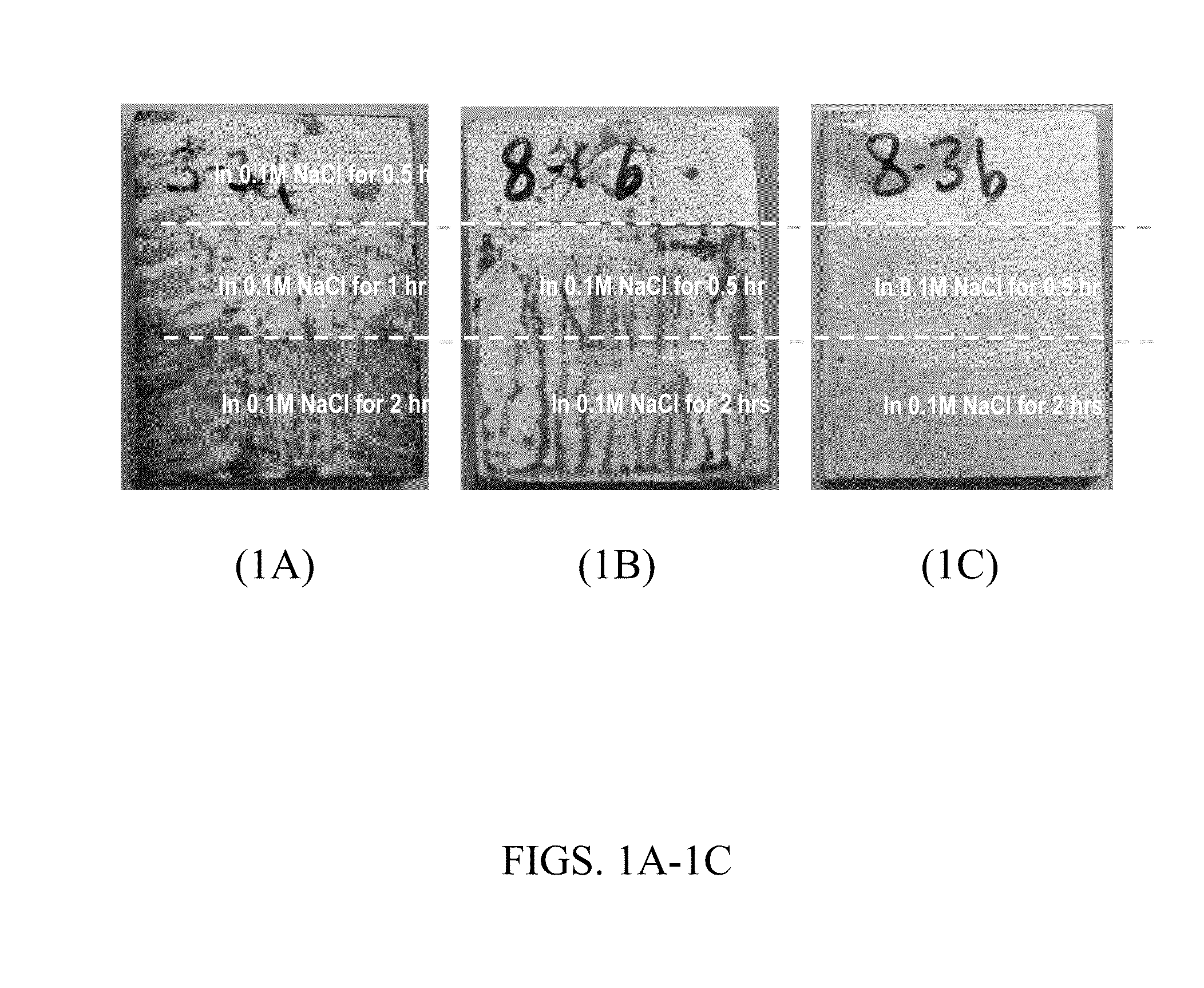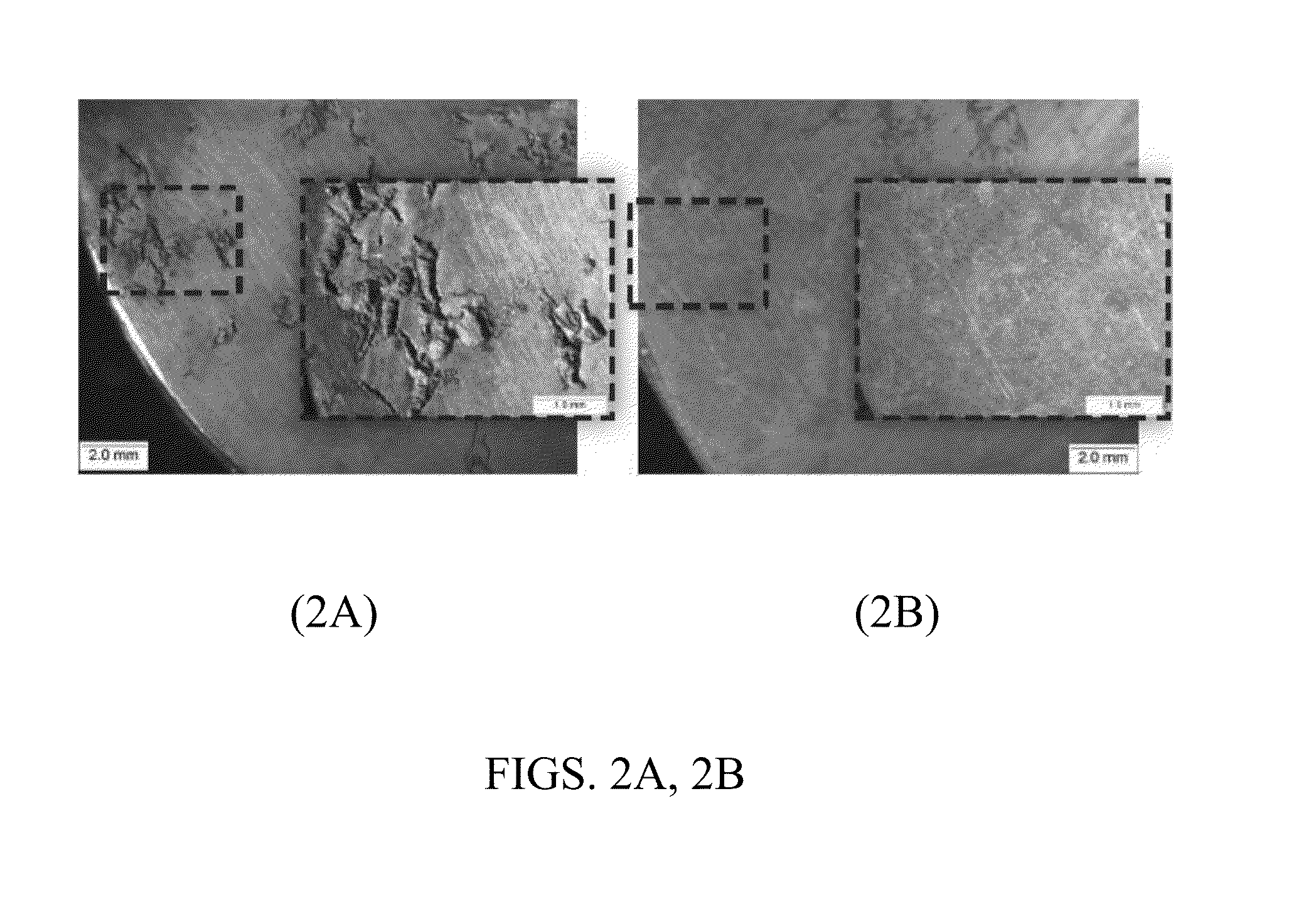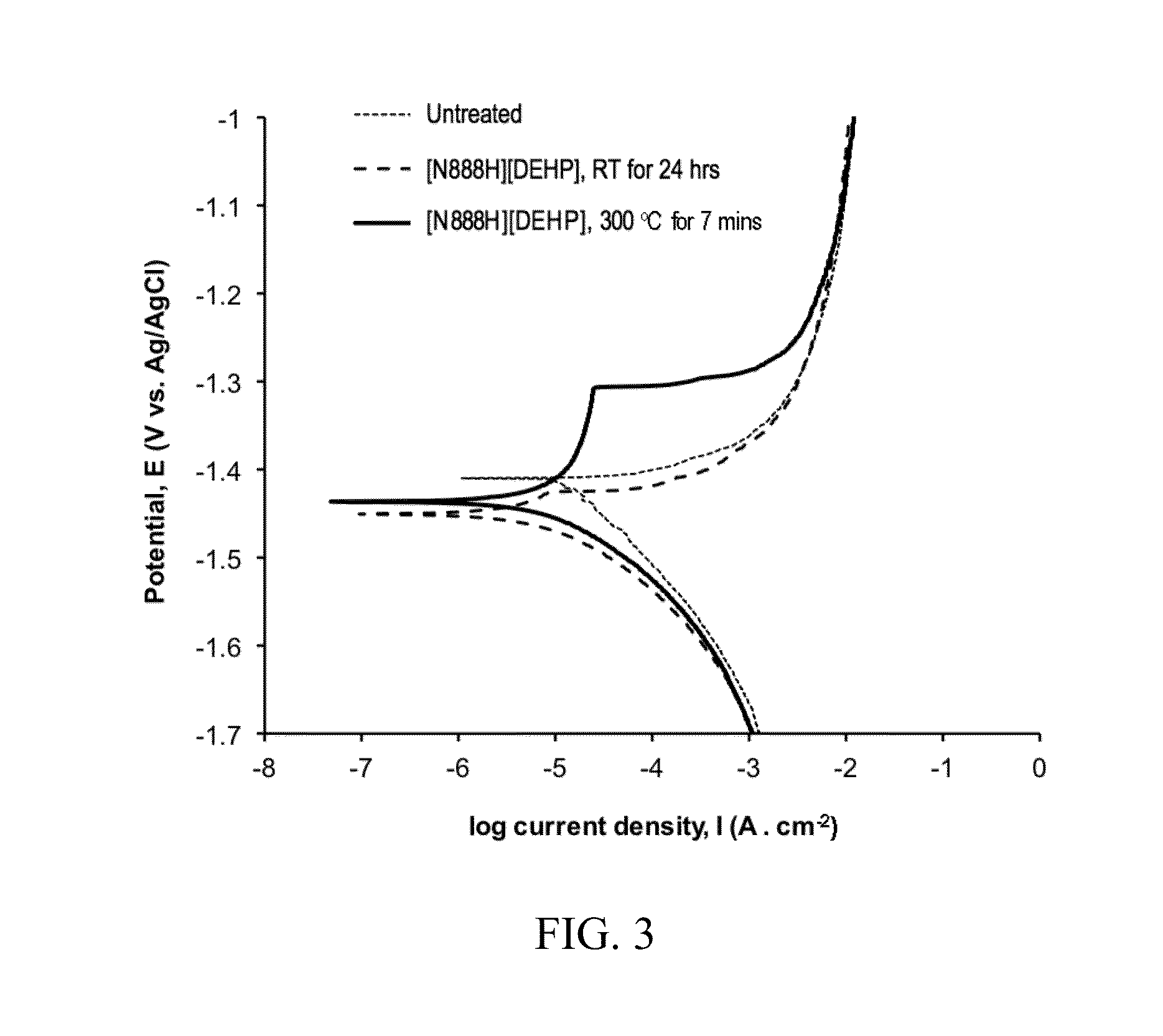Corrosion prevention of magnesium surfaces via surface conversion treatments using ionic liquids
a technology of ionic liquid and surface, applied in the direction of metal material coating process, etc., can solve the problems of widespread application, high cost, and high risk of corrosion of magnesium alloys, and achieve improved corrosion resistance, low volatility, and high thermal and electrochemical stability
- Summary
- Abstract
- Description
- Claims
- Application Information
AI Technical Summary
Benefits of technology
Problems solved by technology
Method used
Image
Examples
example 1
Synthesis of Ionic Liquids
Synthesis of the aprotic ionic liquid tetraoctylammonium bis(2-ethylhexyl)phosphate ([N8888][DEHP])
[0104]Tetraoctylammonium bis(2-ethylhexyl)phosphate ([N8888][DEHP]) was synthesized by the following general scheme:
[0105]Specifically, tetraoctylammonium bromide ([N8888]Br, 11.05 g, 20.2 mmol) and di(2-ethylhexyl)phosphoric acid (HDEHP, 6.53 g, 20.2 mmol) were mixed in 50 mL of deionized water (DI H2O, 18.2 Me-cm) and 30 mL of hexanes. To this stirred suspension was added a solution of sodium hydroxide (NaOH, 0.808 g, 20.2 mmol) in 25 mL of DI water dropwise at room temperature. The white suspension became clear after the addition of NaOH was completed. The mixture continued to be stirred at room temperature overnight. The upper organic phase was separated and washed with DI water four times to ensure removal of NaBr. Solvents were distilled off by rotary evaporator and the product was dried at 70° C. under vacuum for 4 hours to yield [N8888][DEHP] as a visc...
example 2
Ionic Liquid (IL) Thermoconversion of Mg AZ31B Blocks (25.4 mm×19.05 mm×6.35 mm)
at a Temperature of 250° C.
[0109]The Mg AZ31B material used in these experiments is a wrought alloy believed to have the following approximate composition, as provided in Table 1 below:
TABLE 1Standard composition of AZ31B in wt % (S. Housh, et al., “Properties ofMagnesium Alloys”, ASM Handbook, ASM International, Vol 2 (1990) pp. 480-516)ElementotherAlZnMnCaSiCuNiFe(total)MgWt. %2.5-3.50.6-1.40.2 min0.04 max0.1 max0.05 max0.005 max0.005 max0.3 maxBal.
[0110]All surfaces were polished using SiC abrasive papers up to grit P1200. The first block was untreated. The second block was covered by a thin film of the IL tetraoctylammonium bis(2-ethylhexyl)phosphate ([N8888][DEHP]) and was kept at ambient (room temperature, i.e., “RT”) environment overnight. The third block was wetted by the same IL and then baked at 250° C. (i.e., high temperature or “HT”) for 5 minutes followed by an air cool. Both coupons after t...
example 3
Ionic Liquid (IL) Tribo-Conversion of a Mg AM60B Alloy Disc (38.1 mm diameter and 3.18 mm thick)
[0111]One side of a Mg AM60B disc was polished with SiC abrasive papers up to grit P4000 while in contact with distilled water. The foregoing treated side of the disc is herein referred to as “untreated”. The other side of the disc was subjected to the same procedure, except that in the last step of polishing, the IL trihexyltetradecylphosphonium bis(2-ethylhexyl)phosphate ([P66614] [DEHP]) was used instead of water. The foregoing treated side of the disc is herein referred to as “IL tribo-treated”. After the treatments, the entire disc was cleaned by organic solvents and dried before immersion in 1.0 M NaCl solution for 4 hours (higher CF concentration was used because of the better corrosion resistance of AM60B compared to AZ31B alloy). FIG. 2A is a photograph showing the untreated side (polished in water) after the four-hour treatment in 1.0 M NaCl, while FIG. 2B is a photograph showin...
PUM
| Property | Measurement | Unit |
|---|---|---|
| temperature | aaaaa | aaaaa |
| temperature | aaaaa | aaaaa |
| temperature | aaaaa | aaaaa |
Abstract
Description
Claims
Application Information
 Login to View More
Login to View More - R&D
- Intellectual Property
- Life Sciences
- Materials
- Tech Scout
- Unparalleled Data Quality
- Higher Quality Content
- 60% Fewer Hallucinations
Browse by: Latest US Patents, China's latest patents, Technical Efficacy Thesaurus, Application Domain, Technology Topic, Popular Technical Reports.
© 2025 PatSnap. All rights reserved.Legal|Privacy policy|Modern Slavery Act Transparency Statement|Sitemap|About US| Contact US: help@patsnap.com



